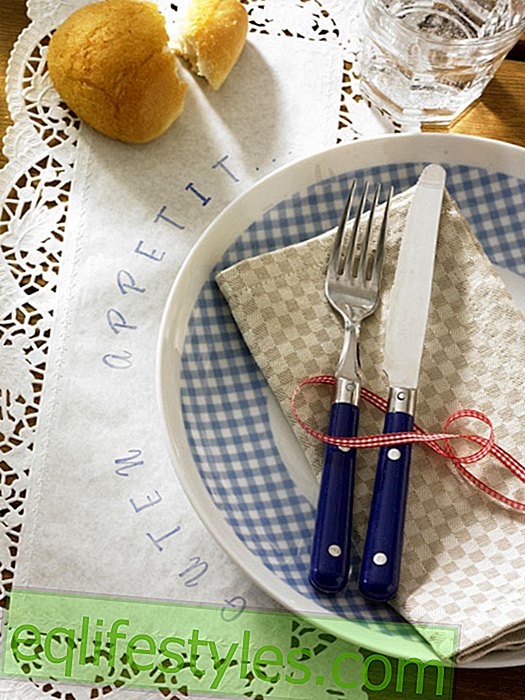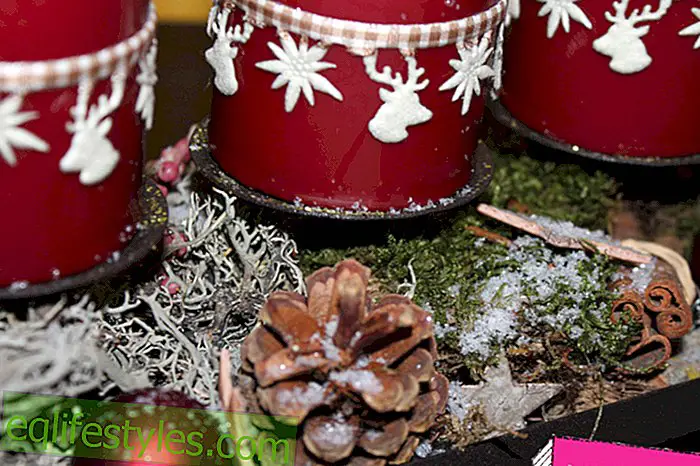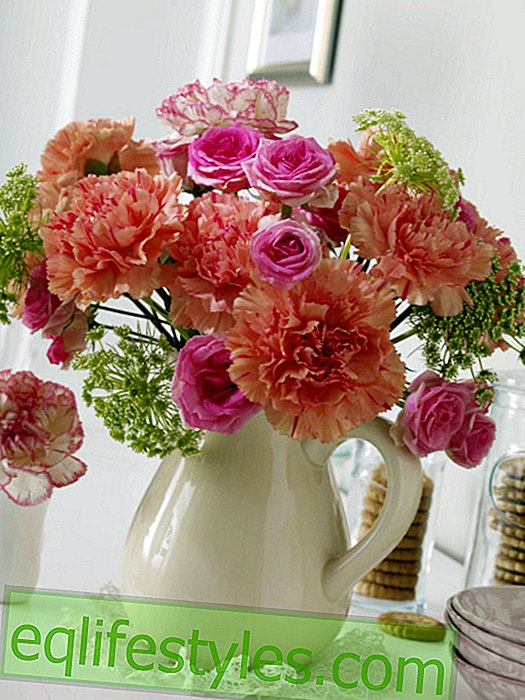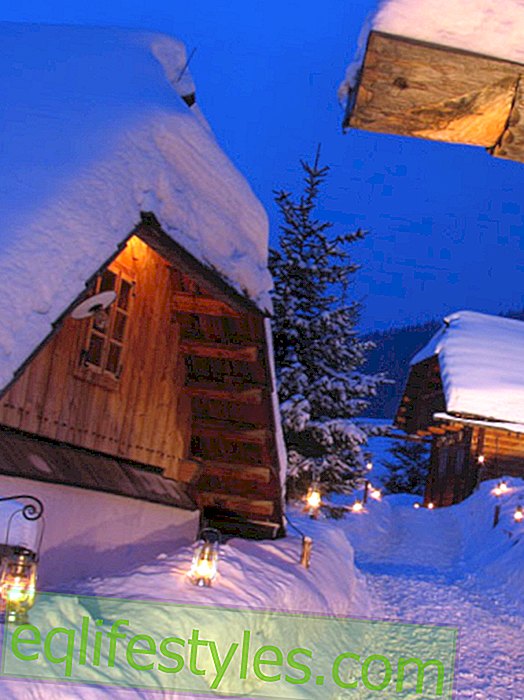Indian summer. The garden shines in warm reds, the sloping sun casts long shadows, first leaves fall.

Photo: Werner Dieterich / Westend61 / Corbis
Now it is time to winterize the garden and prepare for the cold days. Good cold protection for plants, furniture and buildings - before the first frost - is an absolute must. The following should be heeded:
Hedges: Cut your hedges for the last time before the first frost. On large plots, gasoline powered hedge trimmers make the job of winterizing the garden easier. Hobby gardeners should prefer to use electrical models for quiet use around the house. If the power cable disturbs you, you can fall back on cordless hedge trimmers that impress with their quiet running and zero emissions. Specialists like Stihl (www.stihl.de) have power packs with 36-volt lithium-ion battery ready. The HSA 65 (RRP € 279), for example, has a battery life of up to 45 minutes. Their sharp special knives conquer up to 22 millimeters thick branches.
Beds: If frost penetrates into the root area of the plants, the cell water freezes, the plant is damaged or dies off. Vegetable and ornamental beds are therefore covered with straw. Stable fertilizer is even better, but you can also use boards or cloths to make the beds winterproof.
Trees: If the water content under the bark is not sufficiently reduced during the first frost, hardy woody plants can also be damaged. Therefore, coat the stems of your trees with lime. This leads to less heating during the day. Conclusion: The plant reduces the water content in good time, becomes winter-proof.
Mulching: Every year the same question: Where to go with the plant waste? Modern shredders such as Viking's GE 35 L (RRP € 549) significantly reduce waste volume and effortlessly shred even bulky branches. The resulting mulch can be used perfectly for frost protection cover, your plants will love it. Information: www.viking-garden.com.
Roses: If the last great rose of the year with a suitable secateurs, such as the Ciso cordless pruner from Bosch (RRP 69.99 euros, www.bosch-pt.de), cut without bruising, you should make no more cuts to the roses. Instead, pile the logs well with soil and cover the floor with felt or brushwood. This protects against the cold and prevents the evaporation of water, which often causes the roses in winter more than the frost.
Potted plants: The last fertilization of your potted plants should take place in September, after which the growth can slowly come to rest. Do not bring your treasures in too early, this promotes the pest infestation - the longer the plant stands outside, the harder it hardens. Be sure to thoroughly remove dried and fallen leaves, as dead leaves may already be affected by fungal diseases. Look for pests regularly during the winter! If you keep potted plants that stay outside, close to the house wall, it will be warmer. It is also best to put a burlap bag over the crown and cover the soil with straw. A sense of touch is also required for winter casting: The pot bales should be kept dry, but not dry up. So water every three weeks.
Foil houses: In the cold season lemon tree, oleander, begonia, fuchsia and Co. have to be in a sheltered winter quarter. Ideal is a bright, sheltered from drafts location with temperatures between five and ten degrees Celsius, for example, a small greenhouse or a light transparent outdoor hibernation aid weatherproof, double-layered special film (Florino size L: 599 €). The background: With appropriate coolness, the metabolism of the plant comes to rest, but for the "resting metabolism" it still needs enough brightness. If the plant is too light and too warm, it discards the leaves. It's good if the garden treasures simply remain in their outdoor location and can survive the cold months protected from frost (more information: www.florino-online.de).

Wood: If your wooden furniture has to be hibernated outdoors, it must be winterized. Protect them for the sake of the environment best by a natural, moisture-regulating special oil from vegetable raw materials. Wooden garden furniture becomes water-repellent and can be easily refurbished. The "working" of the wood is significantly reduced. For hard-wearing surfaces, the use of natural hard wax (hardwax oil from organic pin 19.60 euros) or a seal with a solvent-free organic oil (top coat from bio pin for 9.95 euros, www.biopin.de) ideal. With the help of the wood primer from Hornbach, which was awarded the "Blue Angel" by the German Federal Government for the Environment and Nature Conservation (BUND) for sustainability, innovation and responsible action, it also prevents fungal and insect infestation. Incidentally, hard tropical woods such as teak or eucalyptus are naturally resistant to fungal attack. They just need to be protected from stains, dirt and dust. To make them winter-proof, after thorough cleaning, coat the surface once or twice a year with a special oil, such as linseed oil.
Rattan: Due to its high oil content, rattan is naturally winter-proof and protected against weathering. Unpainted furniture is therefore cared for only with lemon oil, lacquered can be refreshed with furniture polish again. In general, it is sufficient to moisten the water atomizer occasionally or rub the furniture with a damp cloth. However, this should not happen too often, otherwise the material can harden and become brittle. The addition of saddle soap keeps rattan supple longer.
Aluminum: Aluminum furniture is feather-light and insensitive to the weather, ie winter-proof, but can scratch easily. Never use scouring agents for care, but mild detergent and a soft cloth.
Hot dip galvanized metal: wipe off, dry - done. More care and protection do not need hot-dip galvanized garden furniture to be winter proof. The coating protects the metal from corrosion and rust for decades, even when the garden equipment is always outdoors. Hot-dip galvanizing is contemporary "corrosion protection ex factory": Environmentally friendly, value-preserving and one of the most economical long-term protection methods ever. Where and how you can galvanize your furniture can be found at www.feuerverzinken.com.
Metal: If metal garden furniture is exposed to wind and weather, it will corrode. Once the rust is deep in the material, it must be removed to the bare metal. Thereafter, a rust protection primer should be applied to make the metal furniture more resistant, then a metal protective lacquer in the desired color. In order to keep this workload as low as possible, metal furniture should be covered or stored in the basement, so be winterized. Practical covers, such as the seat group hood Oval, are available for 176 euros at www.schutzhauben-abdeckhauben.com.
Plastic: Plastic furniture can be left outside without hesitation. To care for soap and water, stubborn stains are treated with dirt and grease-dissolving cleaning agents. Plastic furniture can be found at livingo.de.

Glass roofs and conservatories: The safest way to hibernate your plants behind glass. As an alternative to the fully enclosed winter garden (eg SDL Nobiles by Solarlux, www.solarlux.de), the glass roof systems "Terrado" by Klaiber (www.klaiber.de) can be used with much less effort and in no time at all an elegant roof made of slim aluminum profiles build. Guide rails for an awning fabric are already integrated, with side glazing, doors and window elements, the glass roof can grow according to your individual needs. If the prospect of endless window cleaning scares, the page www.saubere-fenster.com recommended. The conservatory glazing from SGG BIOCLEAN ST 150 recommended there offers a considerable reduction in the care required by coating on both sides. Incidentally, even in late autumn, the sun is still developing enough power to produce unpleasant high temperatures inside the glass plant. A good sunscreen is therefore essential. Ideal here are cassette awnings, eg the "Casabox" by Klaiber (www.klaiber).
Wooden terraces: Due to their proverbial hardness, oak is particularly suitable for outdoor use and can easily withstand winter, so it is winter-proof. Durable hardwood boards are offered by manufacturers such as Moco, ready for installation on the terrace, and the matching substructures are also available there. Do-it-yourselfers will be able to build it this year without any problem. All information is available at www.moco.de.
Natural stone floors : Natural stone carpets, such as Risto by Omnifloor, consist of small quartz gravel or fine marble granules bound with a resin. The material lasts a lifetime, is frost-resistant, can be laid on (almost) any surface - indoors as well as on terraces, balconies or garden paths - and fully loadable within 24 hours. For more information visit www.risto-deutschland.de.

Foliage roof: The roof as the uppermost element of small garden buildings, such as arcades, gazebos or tool sheds, is particularly exposed to environmental influences. Even the Babylonians protected their roofs from water with bitumen, a naturally occurring mixture of organic matter. It is practically insoluble in water. Onduvilla roofing and wall panels are produced from bitumen as well as organic fibers and synthetic resins, which in terms of appearance can easily compete with a brick roofing. Even inexperienced do-it-yourselfers can effortlessly lay the durable, sturdy yet light panels (www.onduline.de).

Garden hose: In the ground laid water pipes are protected by its depth from frost, not so the hose in the garden - he is not winterized. The remaining water remains, which expand in the frost, can cause the hose to burst. So unscrew and store warm and dry before it gets really cold.









